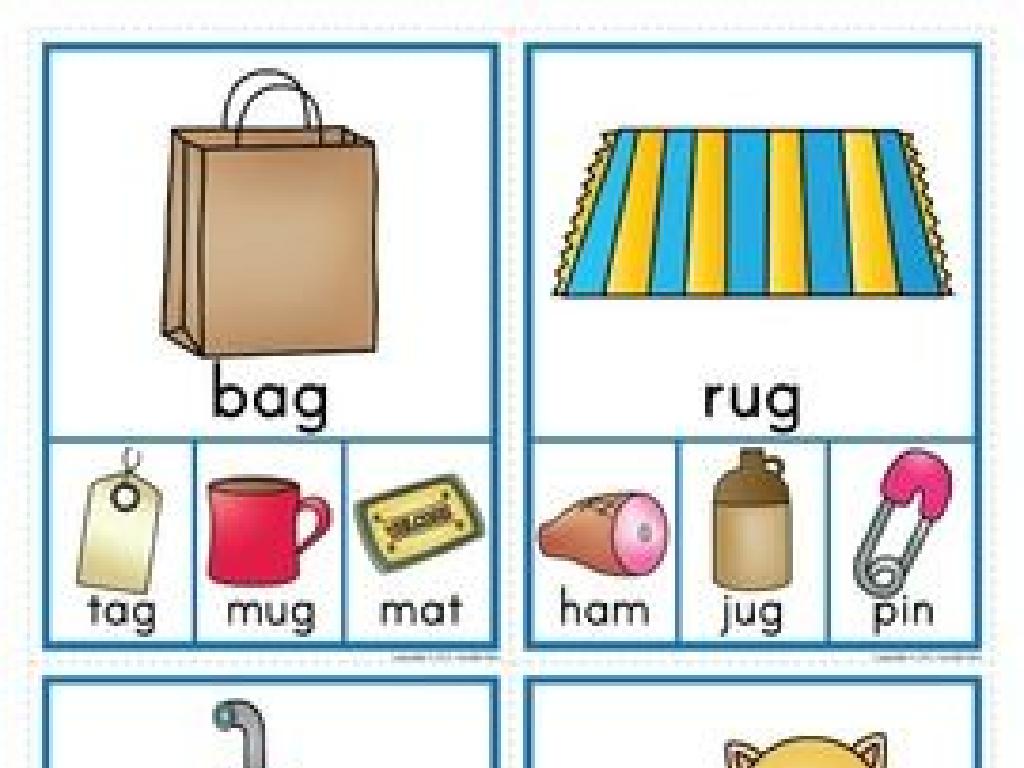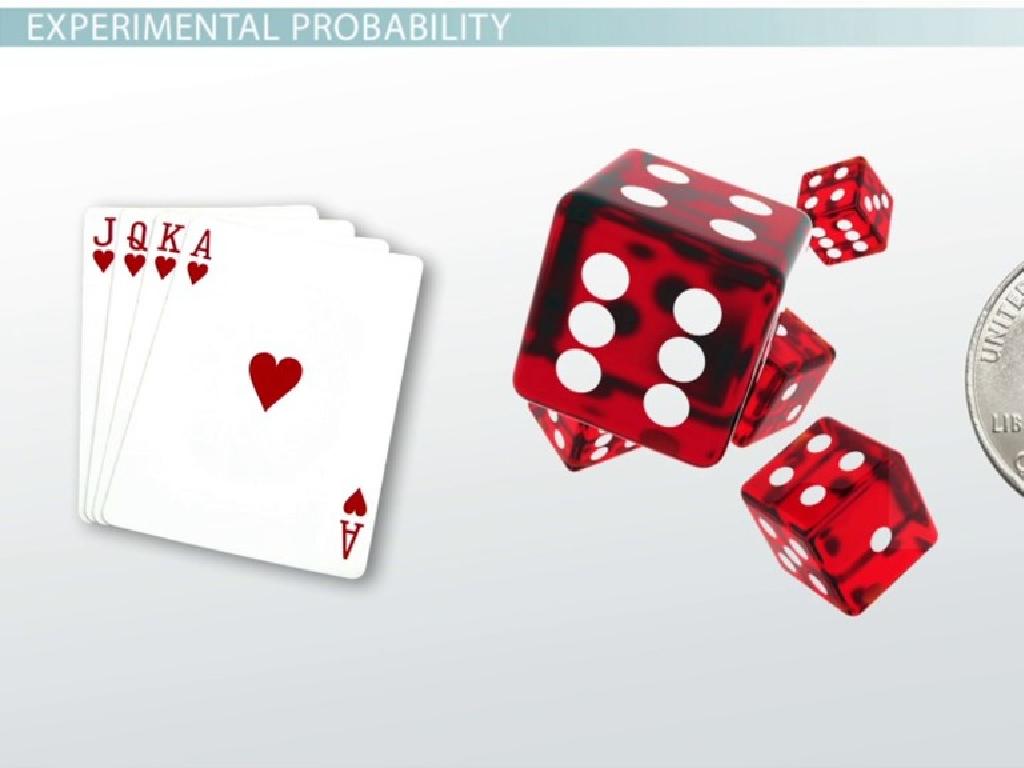Multiplication Input/Output Tables: Find The Rule
Subject: Math
Grade: Fourth grade
Topic: Patterns And Sequences
Please LOG IN to download the presentation. Access is available to registered users only.
View More Content
Welcome to Multiplication Patterns!
– Greet and set the stage for learning
– Explain patterns and sequences
– Patterns repeat, sequences follow a specific order
– Introduce multiplication tables
– Tables with inputs multiplied to get outputs
– Discovering the rules
– Use tables to find and apply multiplication rules
|
Today’s math adventure begins with a warm welcome and an exciting introduction to the world of patterns and sequences. Start by explaining that patterns are arrangements that repeat in a predictable manner, while sequences are ordered lists of numbers. Introduce multiplication input/output tables as a tool for recognizing how numbers are related through multiplication. Show students how to use these tables to find the rule that connects the input (the number we start with) to the output (the result after multiplication). Encourage students to look for and understand the multiplication rule in each table, as this will help them predict future outputs. Provide examples and guide them through the process of finding the rule in different tables.
Multiplication Input/Output Tables
– What is an input/output table?
– A chart showing pairs of numbers where the output is a product of the input and a specific number.
– Examples of multiplication tables
– For instance, if we multiply by 2: Input 1, Output 2; Input 2, Output 4; and so on.
– Relation of input to output
– The output is always the input number times another number (the multiplier).
– Finding the multiplication rule
– To find the rule, look at how the input and output numbers change. Is the output always double the input?
|
This slide introduces students to the concept of input/output tables with a focus on multiplication. Start by defining an input/output table as a tool that helps us understand the relationship between two sets of numbers. Show examples using basic multiplication facts, such as tables for multiplying by 2 or 5. Explain that the input number is multiplied by a certain number to get the output number. Emphasize that the rule of the table is the operation that gets us from input to output. For example, if every output number is double the input, then the rule is ‘multiply by 2’. Encourage students to practice with different multipliers to become comfortable with identifying the rule in various tables.
Multiplication Tables: Finding the Rule
– Understanding ‘the rule’
– ‘The rule’ is the pattern we use to get outputs from inputs.
– Steps to find the rule
– Multiply input number by a specific number to find output.
– Example: Rule of 2
– Input: 1, 2, 3; Output: 2, 4, 6 (Multiply by 2)
– Example: Rule of 5
– Input: 1, 2, 3; Output: 5, 10, 15 (Multiply by 5)
|
This slide introduces the concept of ‘the rule’ in multiplication tables, which is a consistent pattern used to transform input numbers into output numbers. Begin by explaining that finding the rule helps us understand and continue patterns. Show students how to apply a multiplication rule to an input number to get the output. Use simple examples, such as multiplying by 2 or 5, to illustrate different rules. Encourage students to practice with these examples and then create their own multiplication tables using different rules. This will help them grasp the concept of patterns in math and how to identify them.
Let’s Practice Together: Finding the Rule
– Work on a sample input/output table
– Engage in finding the multiplication rule
– Think aloud as we look for patterns in the numbers
– Solve for missing numbers
– Use the rule to complete the table
– Discuss our solutions as a class
– Share how we found the answers
|
This slide is designed for an interactive class activity to practice finding the rule in multiplication input/output tables. Start by presenting a sample table to the class and work through it together. Encourage students to actively participate by asking them to predict the rule based on the input and output given. Once the rule is established, guide the students to apply it to find missing values in the table. After solving, facilitate a discussion where students can explain their thought process and how they arrived at their solutions. This will reinforce their understanding and allow them to learn from each other. Possible activities include: working in pairs to find rules in different tables, a scavenger hunt for rules around the classroom, or a ‘beat the clock’ challenge to solve as many tables as possible.
Your Turn: Discover the Multiplication Rule
– Work solo or with a partner
– Each table has a unique rule
– Look for patterns in the numbers
– Find and apply the rule
– Use multiplication to determine the rule
– Fill in the missing values
|
This activity is designed to help students recognize and apply rules in multiplication input/output tables. Students can work individually or in pairs to encourage collaboration. Each table will have a set of numbers where students must identify the pattern and determine the multiplication rule being used. Once they find the rule, they should apply it to fill in the missing values in the table. For example, if the input is 1, 2, 3 and the output is 3, 6, 9, the rule is to multiply by 3. Provide guidance on how to approach finding the rule and encourage students to check their work by applying the rule to see if it fits all given values. Possible activities include: 1) Using different colored pencils for each rule, 2) Creating their own input/output tables, 3) Explaining their reasoning to the class, 4) Swapping tables with classmates to solve, 5) A gallery walk to view different tables and rules.
Sharing Our Findings: Multiplication Rules
– Students present their rules
– Share how you determined the rule for each table
– Discuss challenges faced
– Talk about any tricky parts and ask for help
– Strategies for finding rules
– Did you look for patterns or use multiplication facts?
– Reinforce concept understanding
– Review different methods to ensure concept clarity
|
This slide is meant to facilitate a discussion where students will share the multiplication rules they’ve found in their input/output tables. Encourage them to explain their thought process and how they arrived at the rule. Open the floor for students to discuss any difficulties they encountered and brainstorm solutions as a class. Highlight the importance of different strategies, such as looking for patterns or applying known multiplication facts, and reinforce the concept by going over these strategies. This will help students understand that there are multiple ways to approach a problem, and they can learn from each other’s methods.
Class Activity: Multiplication Bingo
– Introduction to Multiplication Bingo
– Distribute bingo cards with tables
– Teacher announces multiplication rules
– Mark tables that follow the rule
– Aim for five correct in a row to win!
|
This interactive class activity is designed to help students practice identifying the rules in multiplication input/output tables in a fun and engaging way. Begin by explaining the concept of Bingo and how it will be adapted for multiplication practice. Each student will receive a Bingo card filled with different input/output tables instead of numbers. As the teacher, you will call out multiplication rules, such as ‘times 3’ or ‘times 5’. Students will then have to look at their cards and mark off any tables where the outputs follow the announced rule. The first student to get five correct tables in a row horizontally, vertically, or diagonally shouts ‘Bingo!’ and wins the game. Prepare several rounds with different rules to ensure thorough practice. Encourage students to double-check their tables before claiming victory. This activity not only reinforces multiplication concepts but also promotes careful analysis and attention to detail.
Wrapping Up: Multiplication Tables
– Review: Finding the rule
– We learned how to find patterns in tables
– Homework: Practice tables
– Complete tables to reinforce today’s lesson
– Teach the rule at home
– Explain how to find the rule to a family member
– Keep practicing!
|
As we conclude today’s lesson, remind students of the key points in identifying the rule in multiplication input/output tables. For homework, provide a worksheet with various tables where students can apply the rule to find missing numbers. Encourage them to explain the process to someone at home, which will help solidify their understanding and improve their communication skills. Emphasize the importance of practice in mastering this concept and let them know that we’ll review their findings in the next class.






